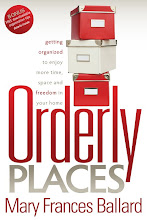The Family Room
has probably been used all winter and now that the family is spending more time
outside, it needs some tender loving care.
While the family is at the pool or outside playing, make the most of this
time to organize it without interruption.
There are many different activities done in this space, so there are
lots of tips to help you with each area.
- Be willing to purge items no longer used or needed to open up the space.
- Place items close to where they are used and within reach of all family members.
- Use containers on surfaces and in cabinets, shelves and drawers to hold similar items. Use baskets or colorful containers if they will be seen on shelving.
- Group collections of items together. This is a more attractive way to display them.
- Use hidden areas over windows and doors, under sofas, and in functional furniture.
- Keep stacked and smaller items off the floor to make clean up easier and the room appear more spacious. Place them in containers for easy clean up.
- Arrange electronic items such as televisions, CD and DVD players and video games in one area so the wires and cables can be contained together.
- Label each end of cables and wires related to the computer and other electronic equipment. It will save much time in connecting or reconnecting
- Use wire baskets or hooks that can be mounted under shelves or cable ties to contain wires.
- Purge videos, CDs and DVDs that are no longer used. Sell or donate them to a local charity, nursing home or hospital. If you want to locate one again they can be rented or borrowed from local libraries.
- Renting or borrowing movies and games is an excellent organizational choice and sets a good example for your children in managing finances and spaces.
- Store CDs and DVDs in their case vertically on shallow shelves or if space is limited, they can be removed from the case and placed in notebooks or cases with plastic sleeves. Sort and arrange by category. Do not stack flat as accessing those on the bottom is more difficult.
- Remotes and game joysticks should be contained in a basket, decorative box or container designed specifically for them. Keep them within easy reach of the chair or sofa.
- Place a table or shelf near every seating area. Large coffee tables can take the place of several small end tables. Choose one with storage shelves, cabinet doors or drawers. Provide an area for playing with toys if you will allow that activity. A lower cabinet can be used to store those items or they can be taken back to the bedroom in a tote box or rolling crate.
- For reading areas be sure to have a comfortable chair with adequate lighting and a place to store books, magazines, newspapers, etc.
- Mix books, plants, attractive storage containers or photographs on bookshelves for more interesting arrangements.
- Use vertical areas to provide extra shelves or cabinets for storage.
- Upper bookcase shelves and over the window shelving can be used to display collectables and photographs.
- Keep an attractive container with pens, pencils, note pad and scissors in a convenient location in case they are needed.
- Card tables can be used for board games, craft activities or other projects. When you are finished it can be folded and stored under the sofa, behind large furniture or in a nearby closet.
- If a computer will be located in this room, consider placing a wireless system in your home to eliminate having to connect all of the components with cables.



